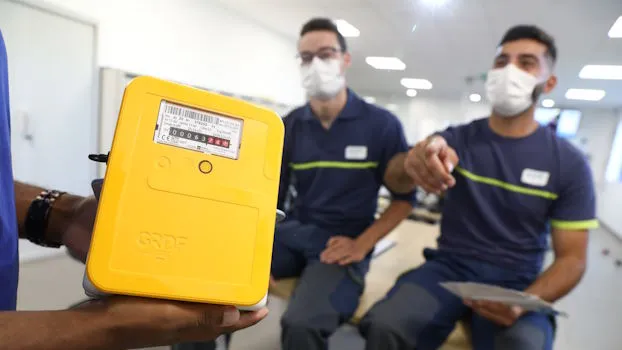Our areas of expertise
GRDF’s areas of expertise cover three key aspects : gas distribution, a smart network, and working on the future of gas and low-carbon renewable energy solutions.
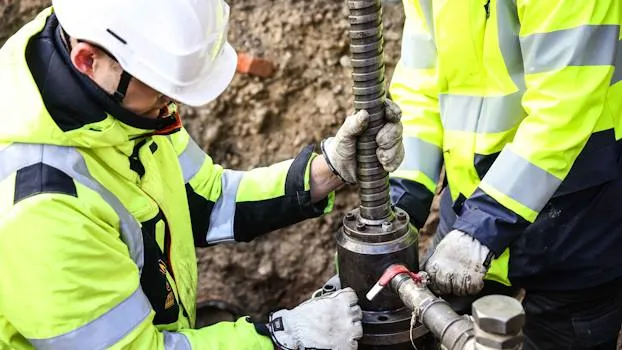
GRDF is France’s primary gas distribution system operator (DSO), collecting decentralized biomethane production and distributing it along with natural gas to more than 11 million customers every day for heating, cooking, and mobility, no matter who the supplier is.
GRDF designs, builds, operates, and maintains Europe’s largest distribution network across more than 9,500 municipalities while guaranteeing the safety of people and assets and ensuring the quality of delivery.
Regulations are changing, but one common purpose remains the same: renewable gases and gas infrastructures will play a crucial role in tomorrow’s energy mix if we are to achieve affordable and resilient carbon neutrality by 2050.
This is why the gas network must be ready to accommodate in a cost-efficient way all new gases.
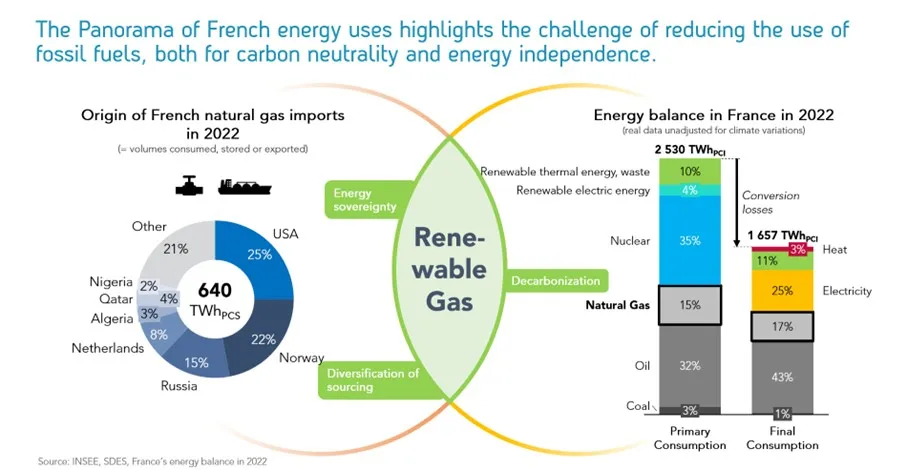
The role of gas in the economy
French industry does not only consumes gas for heating buildings, but also for production processes. The metal industry, paper mills, food processing, cement plants, glassmakers, and the automotive industry are the primary sectors for which gas is the preferred energy source.
Gross energy consumption including raw material usage, by type and sector in 2020 for industrial energy consumption, showed that gas is one of the most used fuels. It represents about 1/3 of the total energy consumption in all sectors of activity.
Gas plays a crucial role in heating buildings. It meets the needs of 40% of French housing (one in three single-family houses and one out of two apartments) and nearly 50% of tertiary buildings. Innovative, high-performance, and energy-efficient equipment guarantees a superior service in terms of heating for all types of tertiary buildings.
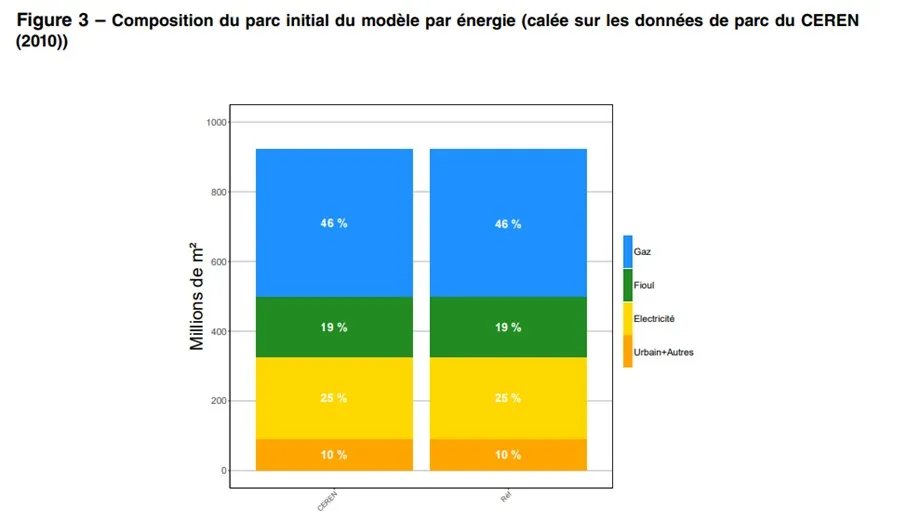
The key role of gas in the energy mix
The energy mix comprises all the primary energy sources used by a country to meet its total energy consumption. In France, the energy mix is highly diverse. As a primary energy source, gas accounts for 15% of the country's annual energy consumption.
Above all, gas infrastructures ensure that seasonal heating demand is met cost-effectively. In France, energy demand is several times higher in winter than in summer, primarily due to heating needs for buildings, and while extreme cold spells are rare, they can cause sudden spikes in demand. To manage this, French gas grids are designed to cope with the harshest winters that occur less than twice a century, which is why their capacity is much larger that of the electricity grid.
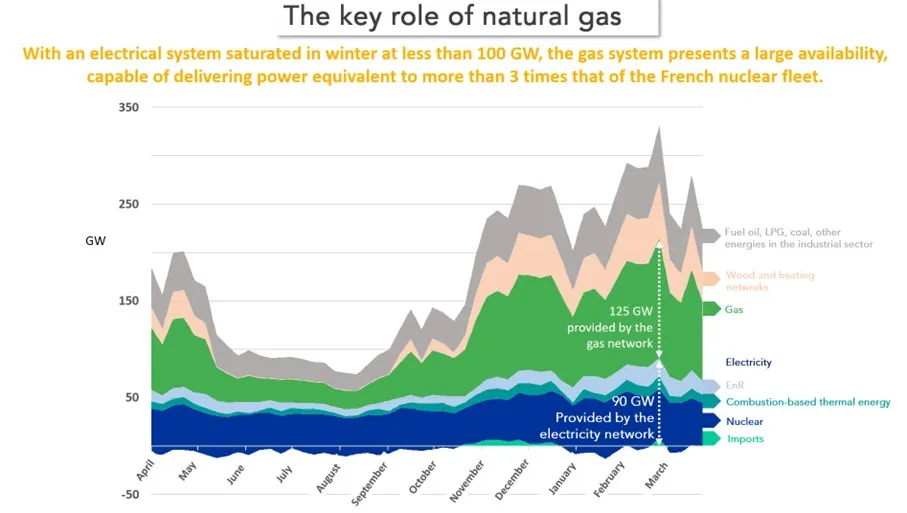
Renewable gas: on the road to carbon neutrality
France has set ambitious goals for its energy transition. Among the most notable are:
- Achieving "carbon neutrality" by 2050.
- Halving final energy consumption between 2012 and 2050.
- Renovating the entire building stock to achieve the "zero-emission building" standard by 2050
Gas infrastructures will contribute to this transition by collecting, storing, and distributing renewable gases, enabling us to use them when and where required.
The development of biomethane, a renewable gas produced locally from organic waste or residues, reflects the 100% renewable energy goal. Given all these advantages, biogas production has been part of France's renewable energy development strategy since 2011. The Energy Transition for Green Growth Act (LTECV), established in 2015, sets a target of 10% renewable gas in the networks by 2030, which corresponds to 39 to 42 TWh. In 2019, the Prospective Committee of the French Energy Regulatory Commission (CRE) concluded that this target was already realistic and achievable (source : Panorama Gaz 2023).
To ensure the long-term development of renewable energy in the French energy mix, it is necessary to promote synergies between the main sources of energy consumed. Here again, gas infrastructures hold a privileged position by enabling the storage of surplus renewable electricity (wind, solar) in the gas network. This process, known as "power-to-gas", further strengthens the central role of gas in a balanced and sustainable energy mix.
In France, having 100% renewable gas in our networks by 2050 is achievable by combining all technologies and by focusing on sobriety, energy efficiency, and targeting the right uses. In addition to anaerobic digestion, the main French production sector, pyrogasification, hydrothermal gasification, and power-to-gas could potentially cover the entire gas demand by 2050.
Our expertise spans numerous areas starting with gas distribution, which is our primary function. This role emphasizes our network’s safety as well as the innovation, research and development projects that support it. Furthermore, GRDF focuses on various mobility solutions including waterway and road transportation with different types of vehicles.
Read more
The Future of Gas : integrating renewable and low-carbon gases into the network
GRDF is committed to transforming our gas network to support the energy transition and achieve our decarbonization goals through the development of innovative technologies and renewable gases.
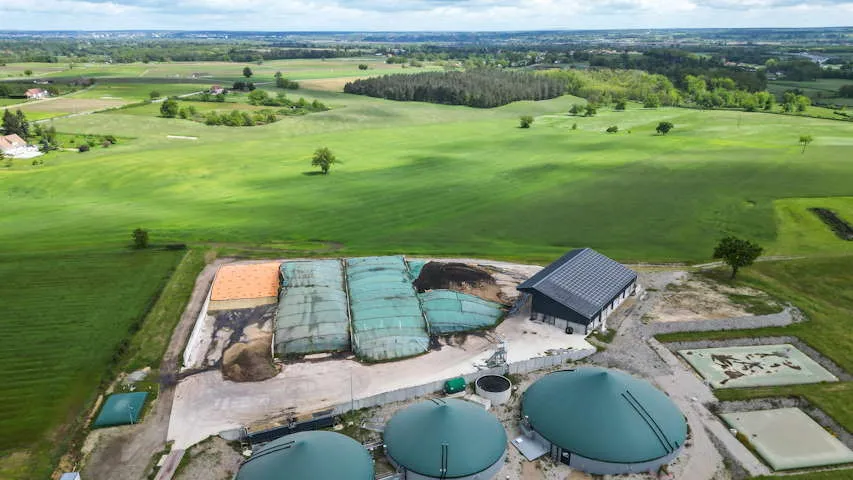
GRDF : the French gas distributor
As a gas distribution leader, GRDF underscores multiple commitments to network safety, innovation, and development. GRDF distributes natural gas on behalf of more than 30 energy suppliers with ...
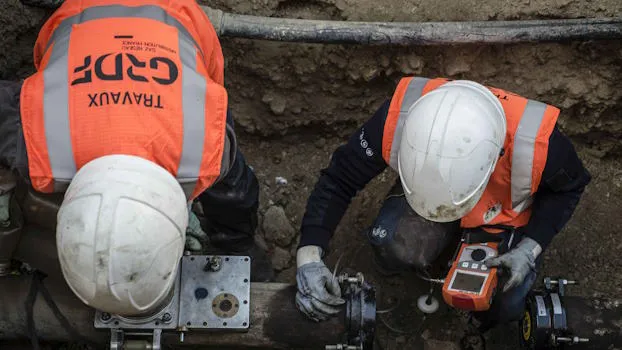
A smart gas network
By rolling out smart gas meters and modernizing our grid, GRDF’s infrastructure promotes France’s energy transition.
